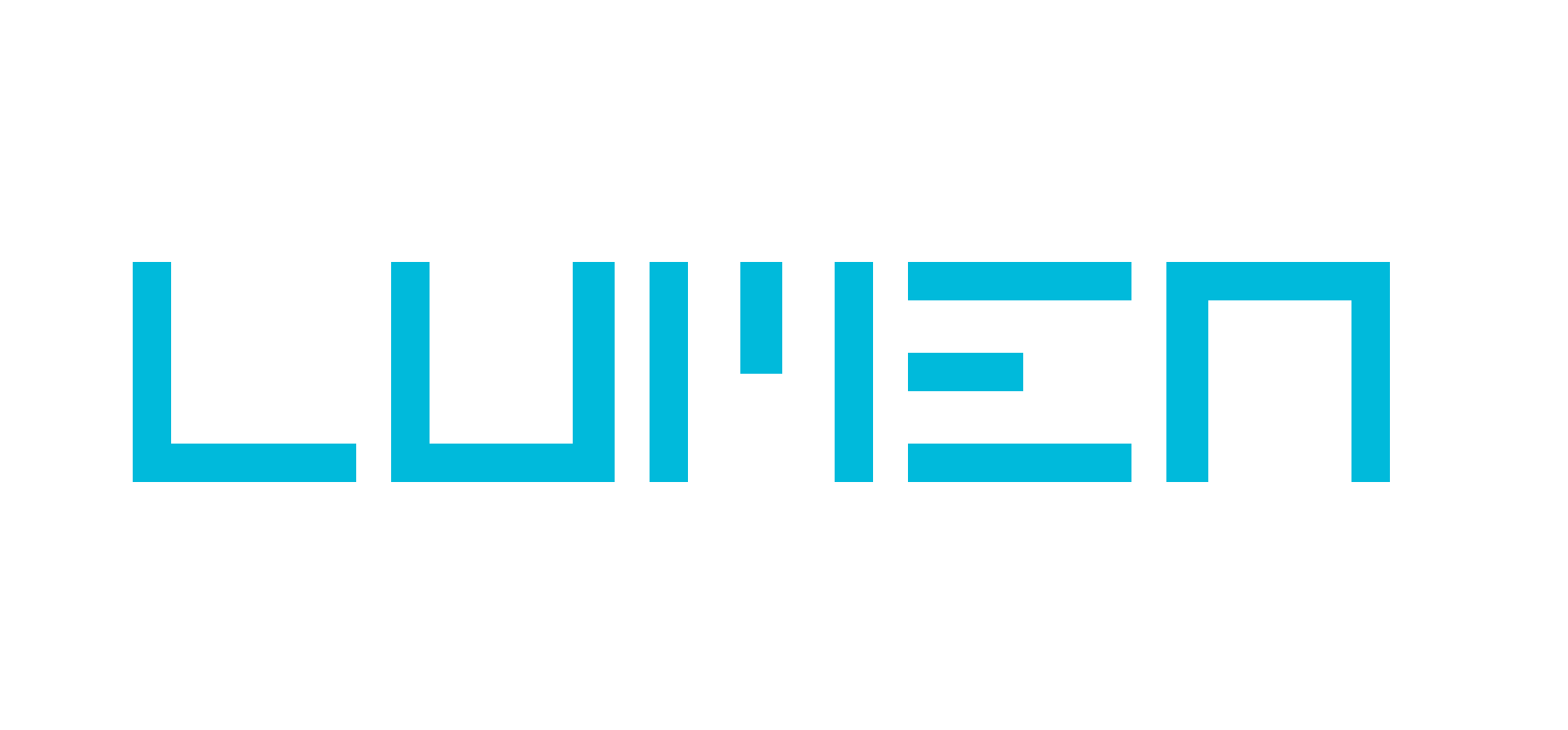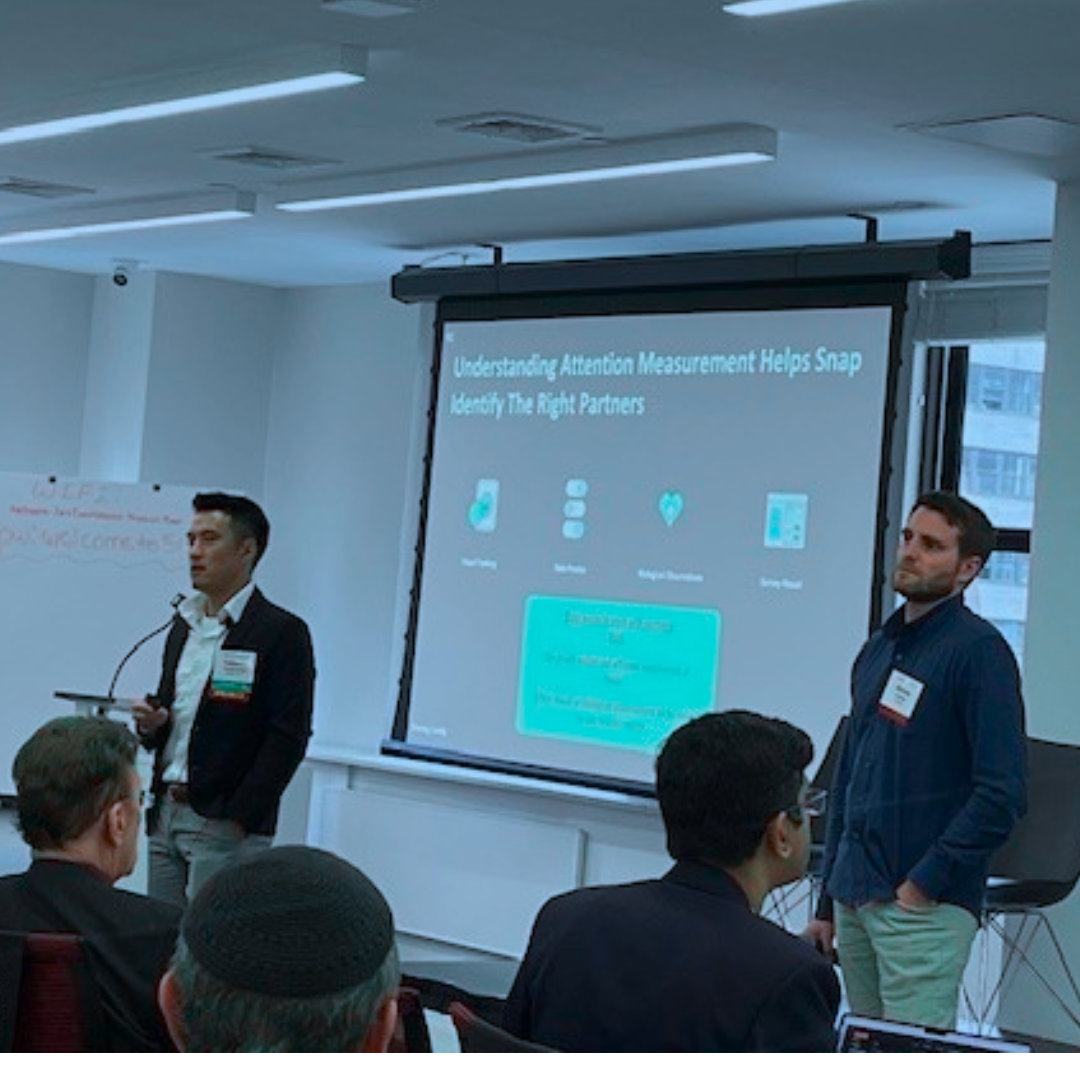ARF Attention 2024: Snap & Lumen’s
This week, Snapchat’s Takeshi Tawarada and Lumen’s Blaise Lucey took the stage in New York City at the ARF Attention 2024 conference to talk about Snapchat’s brand new attention measurement solution, which is powered by Lumen and allows advertisers to measure attention across the platform’s range of unique advertising formats – including augmented reality and Lenses.
The presentation, Snap & Lumen’s Attention Journey, offered a comprehensive view of how Snapchat started testing attention metrics with Lumen’s patented eye-tracking platform and eventually ran enough tests and campaigns to validate the attention metrics – and how attention impacts outcomes – to build a model solution based on that ground-truth data.
Here’s what the presentation covered:
1. Why Attention is Important for Advertisers.
Takeshi explained to the audience that Snapchat had four fundamental reasons for exploring an attention measurement solution:
1. Viewability is not the best predictor of ‘opportunity to see
2. Attention drives outcome
3. Attention is a measure of advertising quality
4. Attention has the potential to become a currency
In testing Lumen’s attention metrics, starting with eye-tracking and attention data, Snapchat hoped to validate these beliefs.
2. Real-World Eye-Tracking Data Must Inform Attention Models.
With unique ad formats and a unique ecosystem, Snapchat wanted to make sure that the attention metrics accurately reflected how audiences saw ads while using Snapchat. As Takeshi said, this is why it was so important to start with human visual data: any predictive attention modelling had to be trained on a ground-truth attention dataset.
Snapchat’s journey with attention started with lab-based eye-tracking studies back in 2021 and continued through 2023.
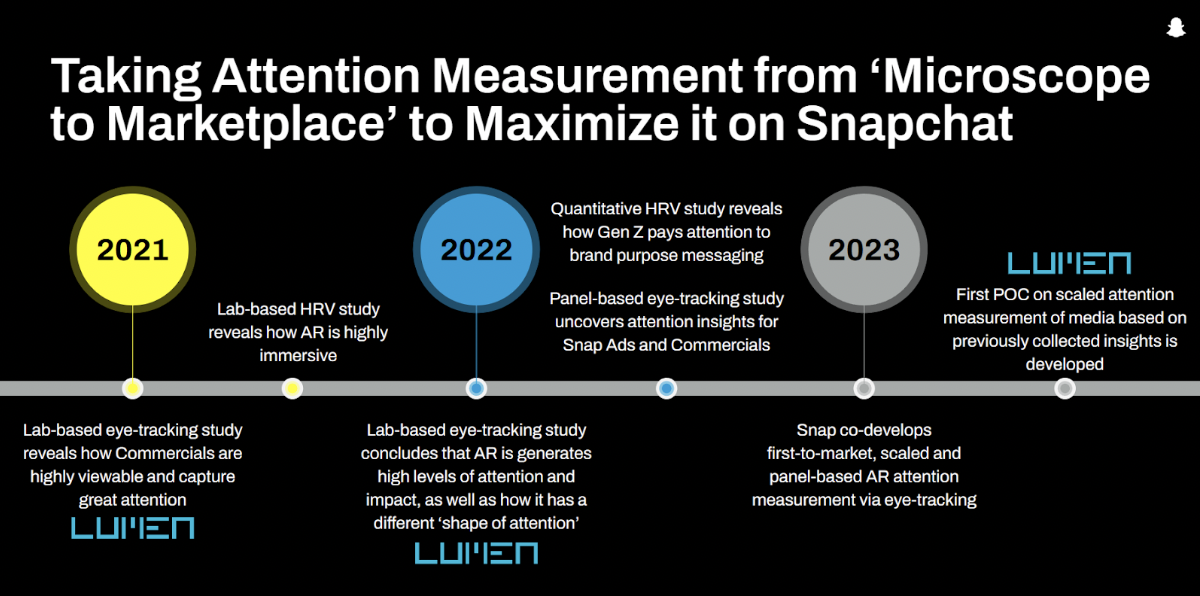
3. Scaling Attention Metrics Starts with Campaign Data.
To truly ensure the scalability of an attention measurement solution, Snap and Lumen knew that the next step would be to examine ad campaigns at scale and understand the attention metrics for impressions – a lot of impressions.
To power the attention model, Snapchat sent a total of 777 ad campaigns across 75 advertising accounts – a dataset that covered almost 25 billion impressions. These campaigns were tested with a brand lift provider to understand the impact of the ads on consumers and then, retroactively, every impression’s attention score was measured through the Lumen platform.
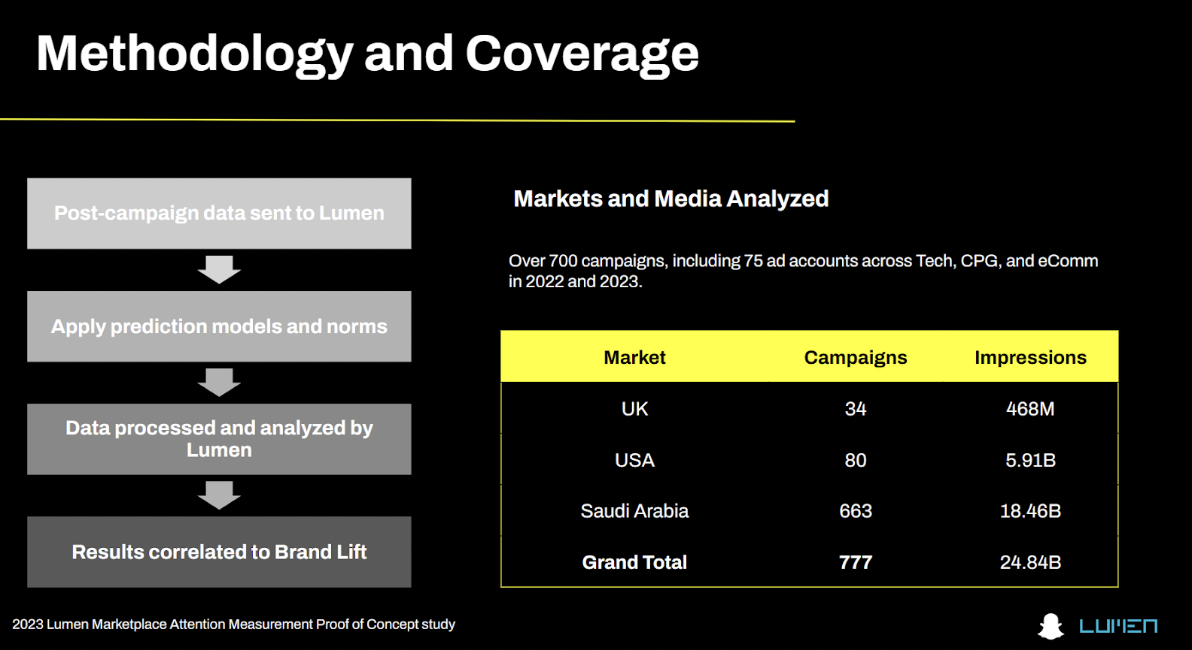
By measuring the outcomes of the campaigns and then measuring the attention metrics across the campaigns, Snapchat and Lumen developed an attention measurement solution that could link attention scores to real results.
4. Attention Metrics Unlock Cross-Channel Measurement.
In an age where platforms are fragmented and data is locked behind walls, advertisers are often scrambling to understand how to compare the performance of different channels. Blaise explained that attention metrics can offer a new way for advertisers to measure with one single set of metrics. In working with Snapchat, Lumen could break down attentive performance by ad format to give advertisers a clear picture of the average attention score across channels and formats:
Snapchat’s Commercial and Lens formats drove some of the highest attention scores across social platforms when attention is measured with a single set of metrics. This gives advertisers a new way to look at media opportunities and plan where to invest.
5. Attention Metrics Help Optimize Media Planning.
As Blaise explained, Lumen’s two primary attention metrics are:
- % viewed: how many people saw the ad
- Vew Time: how long people looked at the ad
These metrics are used to calculate Lumen’s attention score, the attentive seconds per 1000 impressions (APM) and the cost of attentive, the attentive cost per 1000 impressions (aCPM).
Instead of looking at CPM, attention metrics offer a new way to value advertising – and buy media more efficiently by buying the ads that actually get seen.
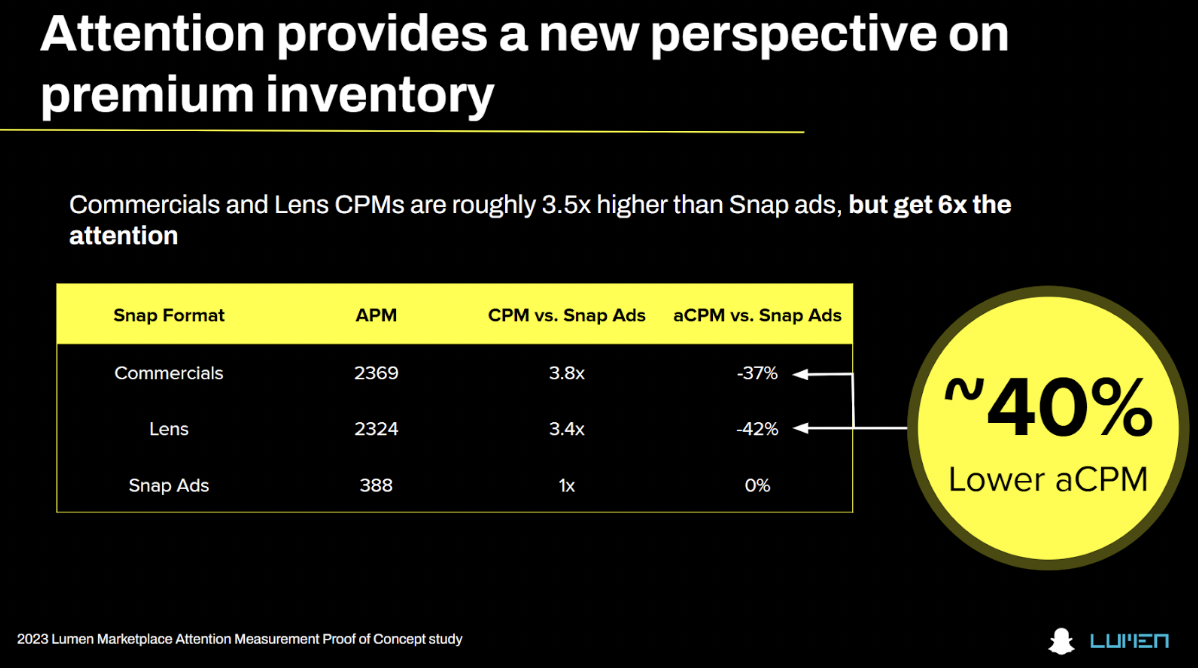
With attention-based media planning, the cost structure of campaigns changes – incentivizing higher-quality media formats that drive more meaningful attention, not just the chance of being seen. And more attention, as Snapchat and Lumen’s work showed, gets better results.
6. Attention Drives Action and Outcomes.
Snapchat’s initial hypothesis around attention was that, when advertisers could measure attention scores and buy media based on attention, they would ultimately get better results for their campaigns.
By measuring 285 different campaigns with brand lift studies and applying attention measurement to the campaigns, Snapchat found that the ads that scored at least 1000 APM drove 20X higher ad recall and a 3X higher likelihood of significant ad recall.
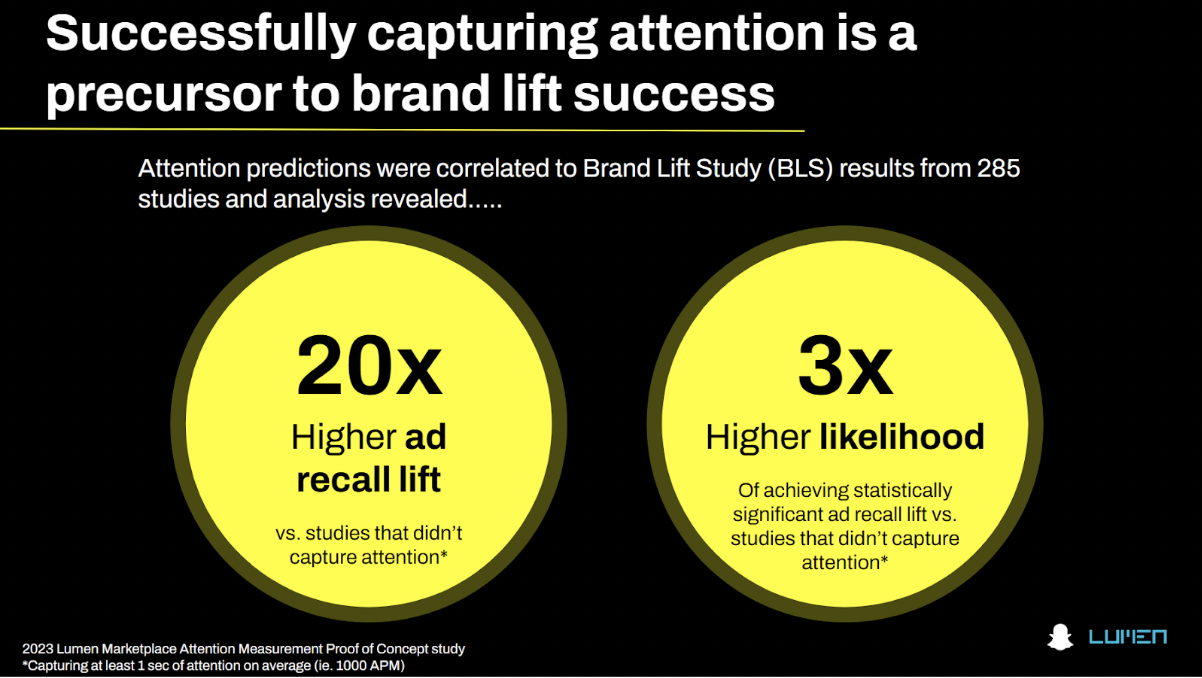
As Blaise and Takeshi explained: Attention-based media buying, when advertisers identify the right level of attention for their desired results, really does perform better – and more efficiently too.
Attention as Experience
Snapchat, with innovative ad formats native to the platform, has now released an attention measurement solution available to all advertisers who want to better understand how Snapchat ads perform across the customer journey and how the formats compare to other platforms.
This is a valuable new tool for anyone looking to diversify their media mix and tap into new audiences and ad types, allowing for a new level of transparency through Lumen’s attention technology suite.
Want to learn more about how to get started? Sign up for a demo with Lumen!

